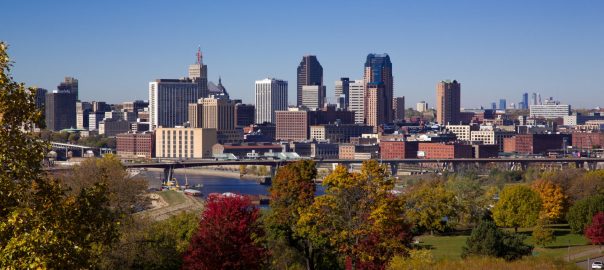Top 10 Parks In The Twin Cities
 Public parks give the solace they need by providing an easy access to nature and open environments.
Public parks give the solace they need by providing an easy access to nature and open environments.
The Twin Cities have a wide variety of parks of many sizes, each with its own distinct characteristic.
Whether you live in or plan to visit the Twin Cities, below are the top 10 parks visit:
1. Minnehaha Park
Built in 1849, this park is at 4801 S Minnehaha Drive, Minneapolis. It’s built over 170 acres and is home to the 53 foot tall Minnehaha Falls and Minnehaha Creek. Many historical buildings are within the park area such as the Minnehaha Depot, the Longfellow House, and the John Harrington Stevens House. Among the park’s many features, there are several public art displays, decorative fountains, disc golf course, picnic areas, volleyball court and many more.

2. Gold Medal Park
Gold Medal Park is an urban park, established in 2007. The park is over 7.5 acres and is in the Downtown East neighborhood of Minneapolis. The park was designed by landscape architect Tom Oslund. The most attractive feature of the park is its 32-foot high mound. The mound is accessible through a spiral walkway which rises out of a green lawn of more than 300 trees. Other features include specially designed luminescent bench and rare and mature trees. This park is a refreshing and recreational place for many living in the Mill District neighborhood as greenery is rare in this area.

3. Loring Park
Loring Park (formerly as Central Park) is the largest park in the Central Community of Minneapolis. The park consists of a small lake known as Loring Lake (previously known as Johnson’s lake). There are different lanes for walking and biking, public art and a fishing pier. Among the many public art pieces displayed, the most popular is the Dandelion Fountain and a statue of Ole Bull, the Norwegian composer.

4. Mill Ruins Park
Mill Ruins Park is in St. Anthony Falls Historic District. This park is a revitalization of Minneapolis’ West Side Milling District. It is on the National Register of Historic Places. The park has remains of many flour mills and industrial buildings along with several iron girders and two stone piers that used to support a trestle for the Minneapolis Eastern Railroad.

5. Tower Hill Park
The Tower Hill Park is at 55 Malcom Avenue, Minneapolis. Although previously named St. Anthony Heights the park name was changed to Tower Hill in 1909 by a petition from the residents. This park consists of the famous 60 foot tall Witch’s Hat tower which gets its name from the conical roof on the tower. The Witch’s Hat tower was originally built as a water tower but later opened to the public. The park also consists of drinking fountains, walking paths and tennis courts.

6. Minneapolis Sculpture Garden
Minneapolis Sculpture Garden is at 726 Vineland place, Minneapolis and is over 11 acres. The garden consists of 40 permanent art installations and many other temporary pieces from time to time making it one of the largest urban sculpture gardens in the country. The most popular attraction of the garden is the Spoonbridge and Cherry fountain.

7. Boom Island Park
The Boom Island Park is at 724 Sibley St. NE, Minneapolis. Previously the park was an island where booms were used to separate logs that floated down the Mississippi Rivermills, and hence the name Boom Island Park. The park was redesigned in 2011. It now has new landscaping and increased connections to the river by creating more paths. Among many other features this park has a boat dock, picnic areas, grills etc.

8. Powderhorn Park
Powderhorn Park is at 3400 15th Avenue, Minneapolis. The park is famous for its Powderhorn Lake which has an area of 11.54 acres. The total area of the park is 65.88 acres. The lake is the shape of a powder horn and hence the name of the lake and the park. This park consists of a baseball field, fishing pier, basketball court, football field and an icing rink.

9. Hidden Falls Regional Park
Hidden Falls Regional Park, established in 1887 is one of the four major park sites in the city of Saint Paul. A unique feature of this park is a spring fed waterfall which the park is also named after. The park features 4 main areas which includes the general picnic area, primitive area, scenic falls area and boat launching area.

10. Cherokee Regional Park
One of the most popular parks in Saint Paul, is the Cherokee Regional Park from the early 1900s. This park has over 300,000 visitors every year. The total area of the park is 100 acres which includes tennis courts, bbq grills, playgrounds, and basketball courts.

For more real estate ideas and tips, learn more here.